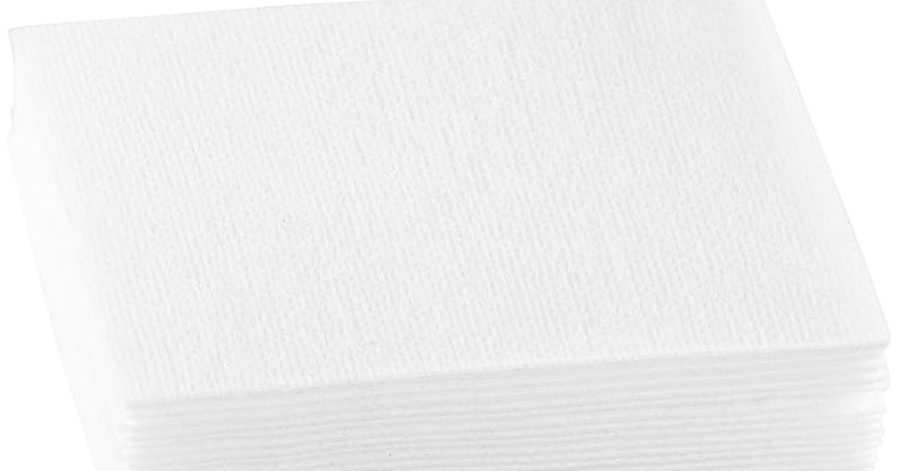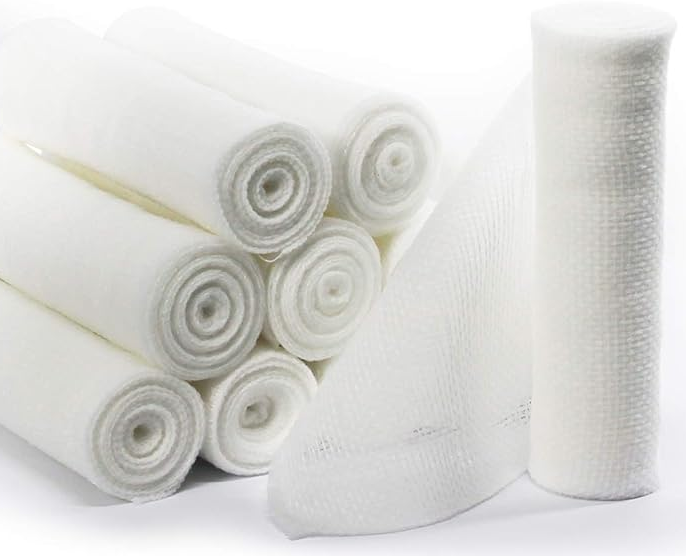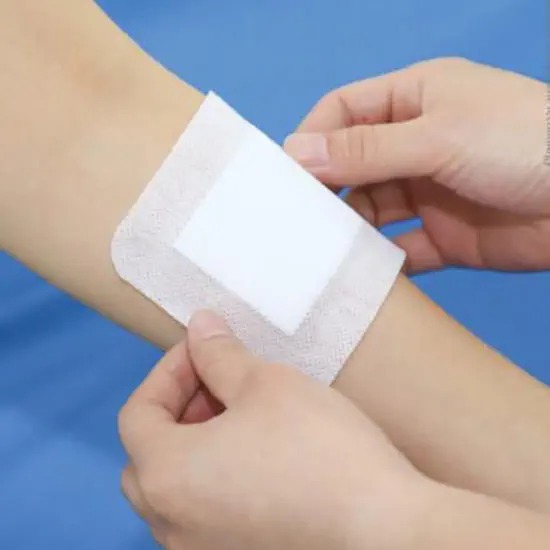Gauze, a thin, translucent fabric with a loose open weave, is a fundamental component in medical settings. Its primary use is as a dressing for wounds, where it plays a crucial role in wound care and management. The term ‘gauze’ often conjures images of white, airy bandages, gently wrapped around injuries to protect them from infection and aid in the healing process.
This fabric is not only used for dressing wounds but also in various medical procedures, such as surgery, where it serves to absorb fluids and keep surgical sites clean. The versatility of gauze makes it an indispensable tool in first aid kits and hospitals alike. Its ability to allow air to circulate over the wound significantly aids in the healing process, making gauze a preferred choice for medical professionals. The use of gauze dates back centuries, indicating its longstanding reliability and effectiveness in healthcare.
History and Origin of Gauze
The term ‘gauze’ has an intriguing historical background. Its origin can be traced back to the early medieval period. The name ‘gauze’ is believed to have been derived from the Palestinian city of Gaza, a major center for weaving in the ancient world. This fabric, initially used for clothing, gradually found its way into medical use. Historically, gauze was made of silk and was highly prized for its softness and absorbency.

Over time, as its medical applications became more apparent, the production of gauze evolved. The transformation from a luxury fabric to a medical necessity is a fascinating journey that underscores the adaptability and enduring utility of gauze. Its evolution over the centuries reflects not only advancements in textile technology but also the growing understanding of wound care and hygiene in medical science. Today, gauze remains a symbol of healing and care, deeply embedded in the practices of modern medicine.
Types of Gauze Materials
Gauze, a versatile and essential material in medical care, is made from various fibers, each lending unique properties to the final product. The most common material used is cotton, known for its softness, absorbency, and gentle nature on the skin, making it ideal for direct wound contact. Cotton gauze is highly breathable, promoting air circulation to aid in the healing process. Rayon, another popular material, is often blended with cotton to enhance the absorbency and strength of gauze. This combination provides a balance of softness and structural integrity, suitable for a range of medical applications.
Polyester, either used alone or in combination with other fibers, adds durability and resistance to gauze. Polyester gauze is less likely to lint or leave fibers in wounds, a crucial factor in surgical settings. The emphasis on surgical gauze standards is paramount. Surgical gauze must meet stringent sterility and quality requirements to ensure safety and efficacy in operating rooms and wound care. These standards ensure that the gauze is free from contaminants and has the necessary absorbency and strength to handle bodily fluids and support healing.
Woven vs. Non-Woven Gauze
Woven and non-woven gauze are two distinct types, each with specific uses and advantages.

Woven gauze : traditionally made from cotton, has a loose, open weave allowing for excellent breathability and absorbency. This type of gauze is ideal for wound dressing, especially where drainage is a concern. Its flexibility and softness make it comfortable for patients, and it can be easily cut to size without unraveling.

Non-woven gauze: on the other hand, is made from fibers bonded together, either chemically, thermally, or mechanically. This type lacks the traditional weave of cotton gauze, resulting in a smoother and less abrasive texture. Non-woven gauze is typically more absorbent than its woven counterpart and is less likely to stick to wounds, making it a preferred choice for wound care where minimal adhesion is desired. Additionally, non-woven gauze tends to be stronger and more tear-resistant, making it suitable for packing wounds and providing support in surgical procedures.
The choice between woven and non-woven gauze largely depends on the specific medical requirements and the nature of the wound or procedure.
Different Forms of Gauze Dressings
Gauze dressings come in various forms, each designed to meet specific medical needs and wound care requirements. Understanding these different types can help in selecting the most appropriate dressing for a given situation.
Impregnated Gauze:

This type of gauze is coated with a substance such as petroleum jelly, zinc oxide, or antibiotics. The impregnation helps in various ways, such as keeping the gauze from sticking to the wound, providing additional medication, or creating a barrier against infection. Impregnated gauze is often used for burns, skin grafts, and wounds with minimal drainage.
Wrapping Gauzes:

These are long strips of gauze used for securing a dressing in place or providing support. They are particularly useful for wrapping around limbs or areas where other types of dressings might not stay secure. Elastic wrapping gauzes are available for situations where a degree of flexibility is required.
Gauze Sponges:

Gauze sponges are thick, absorbent pads used for absorbing bodily fluids and cushioning wounds. They come in various sizes and can be used for cleaning, dressing, prepping, or packing wounds. Their high absorbency makes them ideal for managing wounds with moderate to heavy exudate.
Sterile vs. Non-Sterile Gauze:

Sterile gauze has been treated to eliminate any bacteria, making it safe for use on open wounds or in surgical settings. Non-sterile gauze is suitable for less critical applications, such as wound cleaning or as secondary dressings where an initial sterile layer is already in place.
Adhesive Gauze:

This type of gauze has an adhesive border, allowing it to stick to the skin without the need for tape. It’s convenient for small cuts or wounds in areas where tapes might cause irritation or are difficult to apply.
Hemostatic Gauze:

Hemostatic gauze is impregnated with agents that promote rapid blood clotting. This type is crucial in emergency settings or for patients with bleeding disorders. It accelerates the natural clotting process, thereby reducing blood loss and stabilizing the patient more quickly.
Each of these gauze dressings serves a unique purpose in wound care. The choice of gauze depends on factors like the wound type, location, level of exudate, and the need for sterility or additional medication. Understanding these variations helps healthcare providers to optimize wound healing and patient comfort.
Applications of Gauze in Medical Settings
Gauze plays a pivotal role in various medical settings, serving multiple purposes from wound dressing to surgical assistance, and acting as a protective barrier. Its versatility and effectiveness make it a staple in healthcare.

Wound Dressing:
Gauze is most commonly used for dressing wounds. It provides a cover that absorbs exudate, allows the wound to breathe, and facilitates healing. Different types of gauze, such as impregnated and non-adherent varieties, are selected based on the wound’s nature and the healing stage. For instance, impregnated gauze can prevent the dressing from sticking to the wound, making dressing changes less painful and protecting the wound bed.
Surgical Procedures:
In surgeries, gauze serves multiple functions. It is used to absorb blood and other fluids, helping to keep the surgical area clean and clear. Sterile gauze is essential in this setting to maintain a hygienic environment and reduce the risk of postoperative infections. Surgeons also use gauze to pack or protect organs and tissues during procedures.
Protective Barriers:
Gauze can act as a protective barrier, shielding wounds from external contaminants. By covering a wound, gauze minimizes the risk of infection from bacteria and other pathogens. This barrier also helps in maintaining a moist environment around the wound, which is conducive to healing.
Gauze bandage roll
Role in Wound Healing:
Gauze’s ability to manage exudate is crucial in wound healing. By absorbing excess fluids, it prevents maceration of the skin and promotes a conducive environment for tissue repair. Additionally, certain gauze dressings are designed to maintain a moist wound environment, which can accelerate the healing process.
Protection Against Infection:
The use of sterile gauze is vital in preventing wound infections. Sterile gauze dressings reduce the risk of introducing bacteria into the wound, especially in cases of deep or surgical wounds.
Providing a Sterile Environment:
In surgical and acute wound settings, maintaining sterility is paramount. Gauze used in these environments is often pre-packaged and sterilized, ensuring that it does not carry any contaminants that could compromise the sterile field.
Innovative Gauze Products and Their Uses
The medical field has seen significant innovations in gauze products, enhancing their functionality and application in various scenarios. One such innovation is the development of antimicrobial gauze, which is impregnated with agents like silver or honey. These gauzes are used in treating infected wounds or those at high risk of infection, leveraging their antimicrobial properties to reduce bacterial growth.
Alginate gauze, made from seaweed, is another advanced product. Highly absorbent, it’s ideal for wounds with heavy exudate. Upon contact with wound fluid, alginate gauze forms a gel, creating a moist environment conducive to healing. It’s particularly useful for pressure ulcers, venous ulcers, and diabetic foot ulcers.
Chitosan gauze is designed for hemorrhage control, especially in traumatic wounds. Chitosan is a natural coagulant, accelerating blood clotting, making this gauze ideal for first responders and military use.
Hydrofiber gauze, which turns into a gel upon contact with fluid, maintains a moist wound environment and is used for moderately to highly exuding wounds.
Choosing the Right Gauze for Your Needs
Selecting the appropriate gauze for medical needs requires considering the type of wound or medical situation. For wounds with heavy exudation, highly absorbent gauze like alginate or cotton gauze is ideal. If the wound is at risk of infection or already infected, antimicrobial or silver-impregnated gauze can be beneficial. For burns, skin grafts, or wounds where dressing adherence is a concern, paraffin gauze is a suitable choice due to its non-adherent properties.
In surgical settings, sterile gauze is essential to maintain a hygienic environment and prevent infection. Non-sterile gauze is more appropriate for non-critical tasks such as cleaning and dressing secondary wounds. If the application involves securing dressings or providing support, elastic or adhesive gauze can be effective. It’s also important to consider the patient’s skin sensitivity; hypoallergenic or softer gauze types might be necessary for those with delicate or reactive skin.
Maintenance and Care of Gauze Products
Proper storage and handling of gauze products are crucial to maintain their effectiveness and sterility. Gauze should be stored in a dry, cool place away from direct sunlight to prevent degradation of the material. Sterile gauze packets should remain sealed until use to maintain their sterility. Once opened, they should be used immediately or disposed of to avoid contamination.
Handling gauze with clean hands or sterile gloves is important to prevent the transfer of bacteria or other contaminants. For non-sterile gauze, ensure that the storage area is clean and free from potential contaminants. Regular checks for expiration dates are also essential, as the sterility and effectiveness of gauze can diminish over time. By following these best practices, the integrity and functionality of gauze products can be preserved, ensuring they are safe and effective for medical use.
FAQ :
What is gauze used for?
Gauze is primarily used for wound dressing, providing a protective layer that absorbs exudate and allows air circulation for healing. It’s also utilized in surgical procedures to manage bleeding and maintain cleanliness. Additionally, gauze serves as a protective barrier against infection and can be used in various medical settings for wound care and treatment.
Is it OK to put gauze on a wound?
Yes, it is generally safe to put gauze on a wound. Gauze helps absorb excess fluids, protects the wound from infection, and creates an environment conducive to healing. It’s important to use sterile gauze for open wounds to prevent contamination and change the dressing regularly to maintain hygiene.
Is gauze a cotton?
Gauze can be made of cotton, but it’s not exclusively cotton. Traditional gauze is often cotton-based due to its absorbency and softness. However, gauze can also be made from other materials like rayon, polyester, or a blend, each offering different properties like strength, absorbency, and reduced linting.
What is a gauze swab used for?
Gauze swabs are used for cleaning and prepping wounds, absorbing blood and other fluids, and applying medication. They are also employed in dressing minor wounds and assisting in minor surgical procedures. Available in sterile and non-sterile forms, gauze swabs are versatile tools in both clinical and first aid settings.
In the end :
gauze remains a fundamental and versatile tool in the medical field, with its various forms catering to a wide range of needs. From traditional cotton gauze to innovative types like antimicrobial and alginate gauze, each serves a specific purpose, whether it’s managing exudation, preventing infection, or aiding in surgical procedures. Understanding the different types of gauze and their applications is crucial for effective wound care and medical treatment. Proper maintenance and careful selection based on the specific medical scenario ensure that gauze continues to be an invaluable asset in healthcare, contributing significantly to patient care and recovery.














